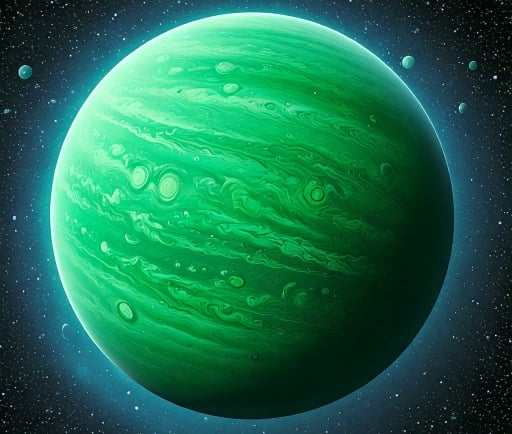Kepler-48: The Green Gas Giant


Introduction to Kepler-48 e
In the expansive cosmos, exoplanets continue to intrigue astronomers and space enthusiasts alike. Among these celestial bodies, Kepler-48 e stands out as a remarkable discovery made in 2014. Located in the constellation of Cygnus, this intriguing planet has captured the attention of scientists due to its unique characteristics and significant distance from Earth.
Discovery and Characteristics
Kepler-48 e was discovered utilizing the radial velocity method, a technique that detects variations in star velocities caused by the gravitational pull of orbiting planets. This method has been instrumental in identifying numerous exoplanets beyond our solar system. Situated approximately 1,201 light years away from Earth, Kepler-48 e orbits its host star in a remarkable period of 982 days. This extended orbital period provides insights into the planet's environment and potential habitability.
Significance and Future Research
The discovery of Kepler-48 e adds to our growing understanding of distant worlds. With such a significant orbital duration, its study could yield valuable information regarding atmospheric conditions and geological activity. As research progresses, scientists are hopeful that further analysis of Kepler-48 e will uncover more about its composition and the potential for life beyond our solar system.
As we expand our knowledge through advancements in technology and space exploration, the continued study of Kepler-48 e exemplifies the importance of investigating celestial phenomena. With each finding, we are not only exploring the depths of space but also unraveling the mysteries of our existence in the universe.
